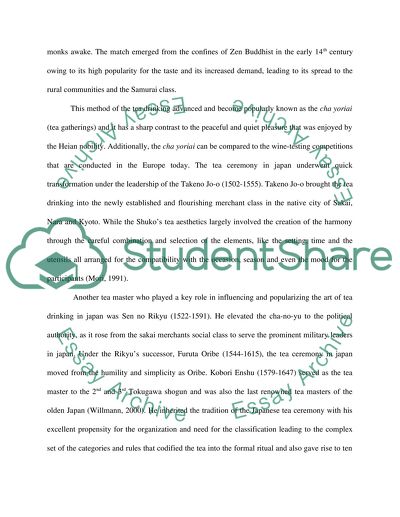Cite this document
(“Japanese Tea ceremony Research Paper Example | Topics and Well Written Essays - 1500 words”, n.d.)
Retrieved from https://studentshare.org/history/1693637-japanese-tea-ceremony
Retrieved from https://studentshare.org/history/1693637-japanese-tea-ceremony
(Japanese Tea Ceremony Research Paper Example | Topics and Well Written Essays - 1500 Words)
https://studentshare.org/history/1693637-japanese-tea-ceremony.
https://studentshare.org/history/1693637-japanese-tea-ceremony.
“Japanese Tea Ceremony Research Paper Example | Topics and Well Written Essays - 1500 Words”, n.d. https://studentshare.org/history/1693637-japanese-tea-ceremony.


